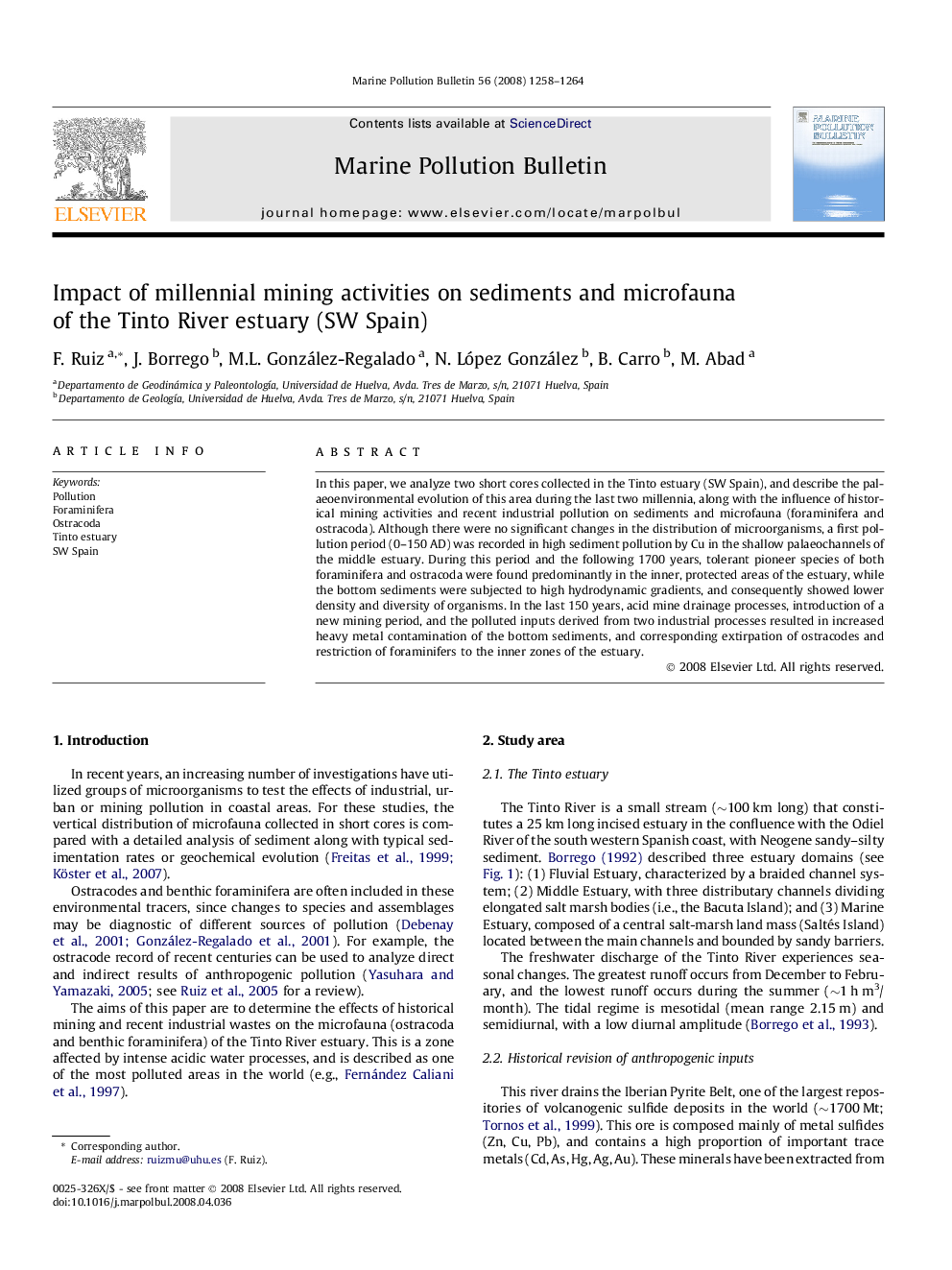| Article ID | Journal | Published Year | Pages | File Type |
|---|---|---|---|---|
| 4477491 | Marine Pollution Bulletin | 2008 | 7 Pages |
In this paper, we analyze two short cores collected in the Tinto estuary (SW Spain), and describe the palaeoenvironmental evolution of this area during the last two millennia, along with the influence of historical mining activities and recent industrial pollution on sediments and microfauna (foraminifera and ostracoda). Although there were no significant changes in the distribution of microorganisms, a first pollution period (0–150 AD) was recorded in high sediment pollution by Cu in the shallow palaeochannels of the middle estuary. During this period and the following 1700 years, tolerant pioneer species of both foraminifera and ostracoda were found predominantly in the inner, protected areas of the estuary, while the bottom sediments were subjected to high hydrodynamic gradients, and consequently showed lower density and diversity of organisms. In the last 150 years, acid mine drainage processes, introduction of a new mining period, and the polluted inputs derived from two industrial processes resulted in increased heavy metal contamination of the bottom sediments, and corresponding extirpation of ostracodes and restriction of foraminifers to the inner zones of the estuary.
